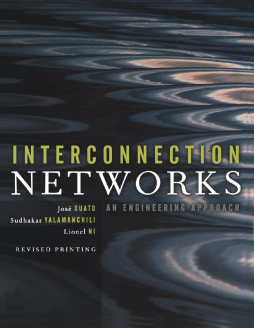
Additional Information
Book Details
Abstract
The performance of most digital systems today is limited by their communication or interconnection, not by their logic or memory. As designers strive to make more efficient use of scarce interconnection bandwidth, interconnection networks are emerging as a nearly universal solution to the system-level communication problems for modern digital systems.
Interconnection networks have become pervasive in their traditional application as processor-memory and processor-processor interconnect. Point-to-point interconnection networks have replaced buses in an ever widening range of applications that include on-chip interconnect, switches and routers, and I/O systems.
In this book, the authors present in a structured way the basic underlying concepts of most interconnection networks and provide representative solutions that have been implemented in the industry or proposed in the research literature.
* Gives a coherent, comprehensive treatment of the entire field
* Presents a formal statement of the basic concepts, alternative design choices, and design trade-offs
* Provides thorough classifications, clear descriptions, accurate definitions, and unified views to structure the knowledge on interconnection networks
* Focuses on issues critical to designers
"This book, for the first time, makes the technology of interconnection networks accessible to the engineering student and the practicing engineer. The authors are three key members of the research community and are responsible for developing much of the technology described. Their unique knowledge and rare insight into the material make for a technically rich treatment that brings together the best of many research papers and fills in the gaps by putting the work into context. In an era when digital systems design is dominated by interconnect, every digital designer needs to understand the concepts of topology, routing, and flow control on which interconnection networks are based. There is no better way for an engineer to come up to speed on interconnection networks than by reading this book."
From the foreword by Bill Dally, Professor, Stanford University
